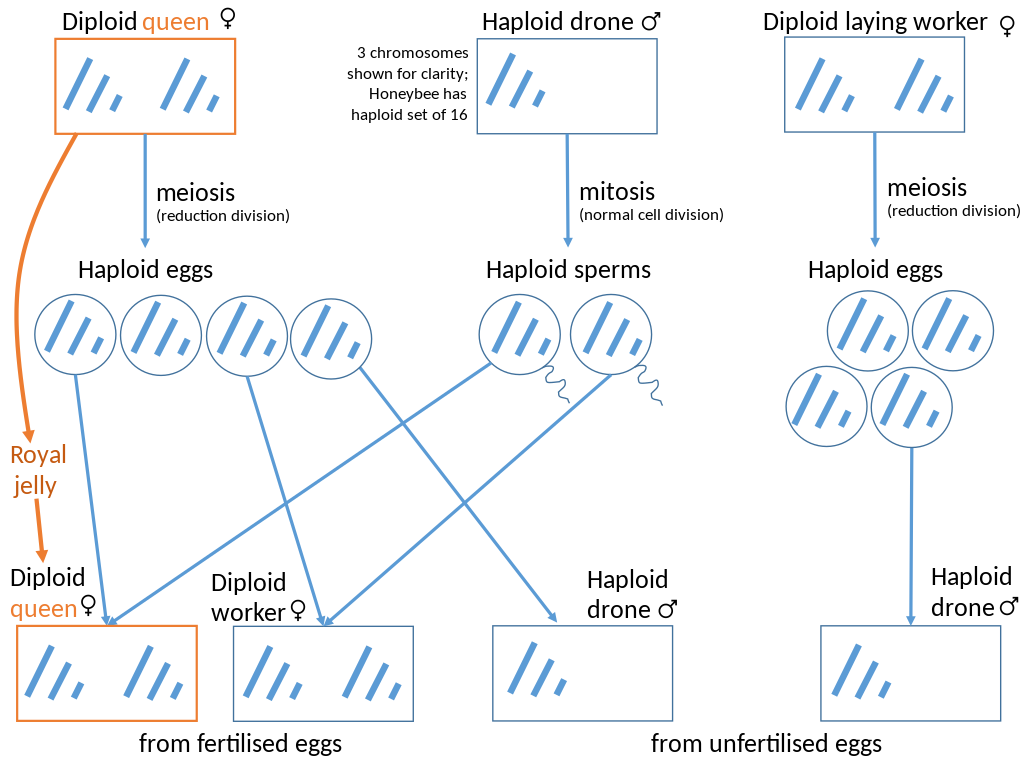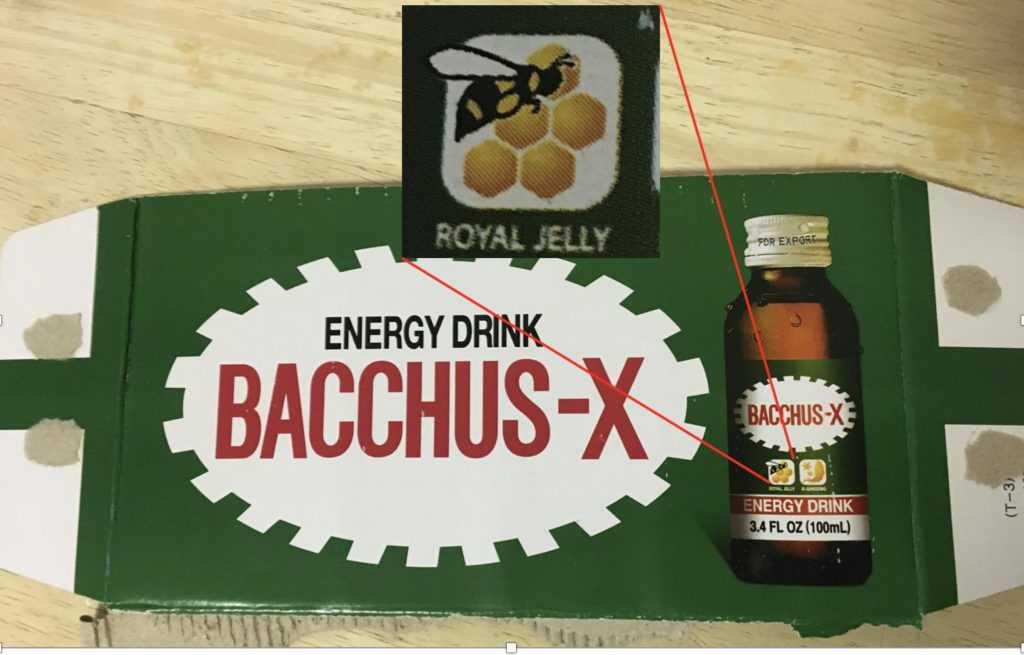
Dr. Scott Bultman was telling me to find royal jelly – to eat royal jelly – to finally take some personal responsibility for my stock in life and become my best self. At least that’s what I was hearing toward the end of our discussion about the interplay between environments, metabolisms, and the epigenome, or the layer of cellular information distinct from DNA sequences. Supposed to be focusing on how Acetyl-CoA and cholesterol metabolism drives genome-wide shifts in histone acetylation during pancreatic tumorigenesis, I found myself fixated instead on an extreme example. Dr. Bultman had described a epigenomic-metabolic interaction powerful enough to reshape an entire animal’s morphological and sociosexual destiny, and it was all caused by a substance called royal jelly (RJ).
Imagine one out of every 100k human babies received a special sauce, rendering them five times larger than their counterparts and imbuing them with unique anatomical features, behaviors, reproductive abilities, and a 20-fold expanded lifespan. In honey bees, such a process actually happens, and it depends on RJ. Among many thousands of individuals, the diploid queen is the only bee in the colony that can lay eggs. She may choose to lay up to 1500 per day. She makes sperm too, but she does not apply any to spacious rooms where she deposited eggs designated to become haploid male drones whose sole task will be to one day mate with a queen, and then die. She instead saves her sperm for the eggs she’s placed into cozier chambers. These eggs will become the smaller, diploid, female workers who somehow fulfill every other role of the colony. Once the larvae hatch, they are tended by “nurse” worker bees who indiscriminately supply a steady diet of RJ. In the coming days, all larvae except those destined for royalty are weaned off of the good stuff and continue to develop into drones or workers on a diet of nectar and pollen. Only a virginal queen receives a constant supply of RJ and continues to consume it throughout adulthood.
This entire process of “caste differentiation” begins with genetically identical eggs, suggesting that different developmental conditions such as environment and nutrition, and not inherited differences in DNA sequences, are responsible for transforming a lowly drone into a queen bee. Accordingly, epigenetic phenomena have been invoked to provide a mechanism by which identical DNA-encoded information could be differentially regulated and expressed. While the specifics of when and which genes’ expression levels must be tuned up or tuned down to generate a queen are not completely understood, recent studies have attempted to describe how these wildly divergent developmental pathways might be specified. For example, one group manipulated various aspects of the queen-making process and noted that differing RJ consumption in workers versus queens caused wholesale changes in levels of genomic DNA-methylation, an epigenetic modification that generally suppresses transcription of the underlying genetic code. Another study showed that certain fatty acids accounting for up to 5% of RJ composition act as histone deacetylases, enzymes that can repress gene expression by tightening the coils of DNA and protein called chromatin. These results show us RJ’s power to shape patterns of gene expression that set the course of development toward distinct bee castes.

People have been fascinated by RJ for a long time, and not just for its incredible ability to shape larval development and bee colonies at large. This creamy bee frosting is not only tasty, it shows an impressive array of bioactivities, including antibiotic, anti-tumor, and neurohormonal properties described as far back as the 1950s. More recent findings have fueled hype for its use as an anti-aging dietary supplement or potential therapeutic for Alzheimer’s Disease. The hype was getting to me, too. Did my genome harbor latent sequences encoding exceptional abilities just waiting to be unlocked by the right metabolites? Was I just a little chromatin remodeling away from my final form? Had I been occasionally misusing the word “epigenetics”? Primed with such thoughts and wandering the aisles of H-Mart in Cary, NC, the green stacks of “Bacchus-X” energy drink demanded attention. Here was the RJ vector I had been looking for. Typical product-paralysis suspended by a chance at epigenetic freedom, I placed two cases into the shopping cart without hesitation.
I promptly began a series of exposures to Bacchus-X and the epigenomically-active RJ within it. One hundred milliliters of the medicinal elixir would be orally administered at the moment my genome reached its most impressionable: in the morning at the bus-stop immediately following a chromatin-loosening bike ride. Two liters of Bacchus-X later, and I’m not sure what to report. An honest attempt at objective self-analysis suggests that nothing has happened. Perhaps my capacity to respond robustly to RJ has been lost on the twisted evolutionary path between insect and human. Perhaps, my exposure missed a narrow but critical developmental window. Perhaps I just need to increase the dose. But, until funding materializes to run a full panel of multi-omics sequencing experiments using cells from my various tissues, I cannot rule out that I have sustained and now carry RJ-induced epigenetic alterations. I cannot rule out that my cells now operate under a new, more royal program of gene expression, enriching them with gene products unique to the queen. In fact, with a Bacchus-X in-hand, maybe I’m closer than ever to taking the throne and directing the colony, at least until I’ve run out of RJ.
Peer edited by Erin Kober